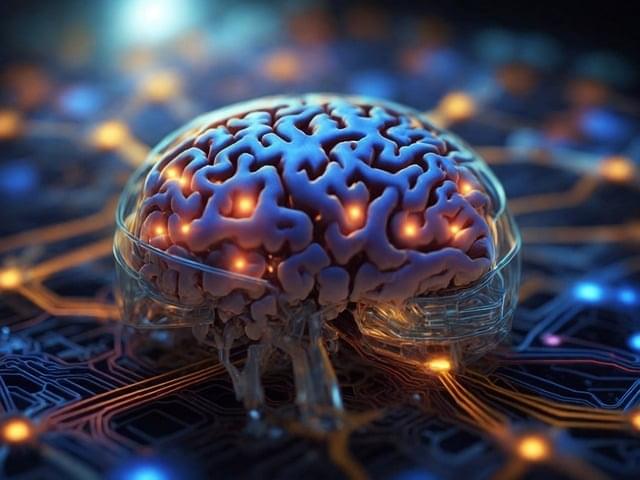Elon Musk’s Grok is one for the twittering class.


Tech juggernaut Nvidia continued its winning streak on Wednesday, posting record quarterly revenue of $39.3 billion, up 12% from last quarter and 78% a year ago, compared to Wall Street’s projection of $38.3 billion. Sales for the year came in at $130.5 billion, up 114% from the previous year.
The company forecast revenue for next quarter to hit $43 billion, slightly above the Street’s projections. Gross margins dipped for a second consecutive quarter, however, coming in at 73.5%, matching the guidance CFO Colette Kress offered last quarter. She said margins are expected to temporarily drop into the low 70s amid the Blackwell rollout.
Another amazing quarter from the company, said Will Rhind, founder and CEO of GraniteShares, who manages leveraged ETFs that give investors double the exposure to long or short positions on the stock. The only slight thing that I guess you could probably nitpick on is margins.
Today, the company’s data center business accounts for most of its sales as customers, including nearly all of Big Tech, race to amass as much compute power as possible. The data center division’s $35.6 billion in revenue increased 93% from the same quarter last year and beat the Street’s expected number of $34.2 billion.
Nvidia stock rose 171% in 2024, accounting for more than a fifth of the S&P 500’s overall gain. The company’s earnings are viewed as a reckoning for the whole Gen AI trade, making the chip behemoth’s financial results a momentous occasion for the entire equities landscape.
Rhind noted this latest batch of earnings comes as the market deals with increased uncertainty about issues such as tariffs and inflation. It really feels like the emphasis on this particular earnings call is more important than perhaps any of the others so far, he said.
DeepSeek, TikTok, CapCut, Shein, Temu, BYD, DJI, Huawei — Chinese technology is everywhere and in many areas the country is challenging the former high-tech powerhouses.
It’s all down to an ambitious plan China set out 10 years ago. The Made in China 2025 project vowed to turn China from the world’s factory to the world’s innovator.
And according to experts – they have largely succeeded. So how did they do it and what does it mean for the rest of the world and the future of technology dominance? Our Cyber Correspondent, Joe Tidy, explains.
00:00 Introduction.
01:18 Made in China 2025
04:07 Sanctions.
05:35 Reactions.
Check out more videos on AI & Technology, here 👉🏽 https://www.youtube.com/playlist?list=PLz_B0PFGIn4e0fyBwDLpcmhlvfBn6H0Qx.
Find more of the best BBC World Service documentaries you can watch in less than 30 minutes here ➡️ https://www.youtube.com/playlist?list=PLz_B0PFGIn4cI2qSy69-3UkgBWaXGHRrx.

Deep Nanometry (DNM) is an innovative technique combining high-speed optical detection with AI-driven noise reduction, allowing researchers to find rare nanoparticles like extracellular vesicles (EVs).
Since EVs play a role in disease detection, DNM could revolutionize early cancer diagnosis. Its applications stretch beyond healthcare, promising advances in vaccine research, and environmental science.
A Breakthrough in Nanoparticle Detection.


The biological cycle of our existence seems relatively straightforward: we’re born, we live, we die. The end.
But when you examine existence at the cellular level, things get a bit more interesting. You, me, and all of the 108 billion or so Homo sapiens who’ve ever walked the Earth have all been our own constellation of some 30 trillion cells. Each of our bodies is a collective organism of living human cells and microbes working in cooperation to create what our minds view as “life.” However, a growing number of new studies have found that, at least for some cells, death isn’t the end. Instead, it’s possibly the beginning of something new and wholly unexpected.
A growing snowball of research concerning a new class of AI-designed multicellular organisms known as “xenobots” is gaining scientific attention for their apparent autonomy. In September 2024, Peter Noble, Ph.D., a microbiologist from the University of Alabama at Birmingham, along with Alex Pozhitkov, Ph.D., a bioinformatics researcher at the City of Hope cancer center, detailed this research on the website The Conversation.

“Now the rise of AI is sparking a new discussion: If automation takes over more physical tasks and artificial intelligence takes over more intellectual ones, humans will be defined by their social abilities, said Raman.”
M doomed! 😜
The knowledge economy is on the way out, and a new economy is on the way for us humans at work, he said. I’m calling it the innovation economy.
In this new era, human innovation and our uniquely human skills, like social and emotional intelligence will be key, he added.
Skills such as creativity, curiosity, courage, compassion and communication — or the 5 C’s — are what underpin innovation, allowing us to come up with new ideas that challenge the status quo, collaborate, and ultimately build together, he said.
Anthropic, an artificial intelligence company founded by exiles from OpenAI, has introduced the first AI model that can produce either conventional output or a controllable amount of reasoning needed to solve more grueling problems.
Anthropic says the new hybrid model, called Claude 3.7, will make it easier for users and developers to tackle problems that require a mix of instinctive output and step-by-step cogitation. The user has a lot of control over the behavior—how long it thinks, and can trade reasoning and intelligence with time and budget, says Michael Gerstenhaber, product lead, AI platform at Anthropic.
Claude 3.7 also features a new scratchpad that reveals the model’s reasoning process. A similar feature proved popular with the Chinese AI model DeepSeek. It can help a user understand how a model is working over a problem in order to modify or refine prompts.
Dianne Penn, product lead of research at Anthropic, says the scratchpad is even more helpful when combined with the ability to ratchet a model’s reasoning up and down. If, for example, the model struggles to break down a problem correctly, a user can ask it to spend more time working on it.
Frontier AI companies are increasingly focused on getting the models to reason over problems as a way to increase their capabilities and broaden their usefulness. OpenAI, the company that kicked off the current AI boom with ChatGPT, was the first to offer a reasoning AI model, called o1, in September 2024.
OpenAI has since introduced a more powerful version called o3, while rival Google has released a similar offering for its model Gemini, called Flash Thinking. In both cases, users have to switch between models to access the reasoning abilities—a key difference compared to Claude 3.7.

A robotic arm that moves with nothing but the power of thought—a concept that once seemed like pure science fiction is now at the heart of Neuralink’s latest breakthrough. The brain-chip company, founded by Elon Musk, has unveiled an ambitious project that aims to connect its neural implant, the N1, to an experimental robotic limb, potentially transforming the lives of people with paralysis.